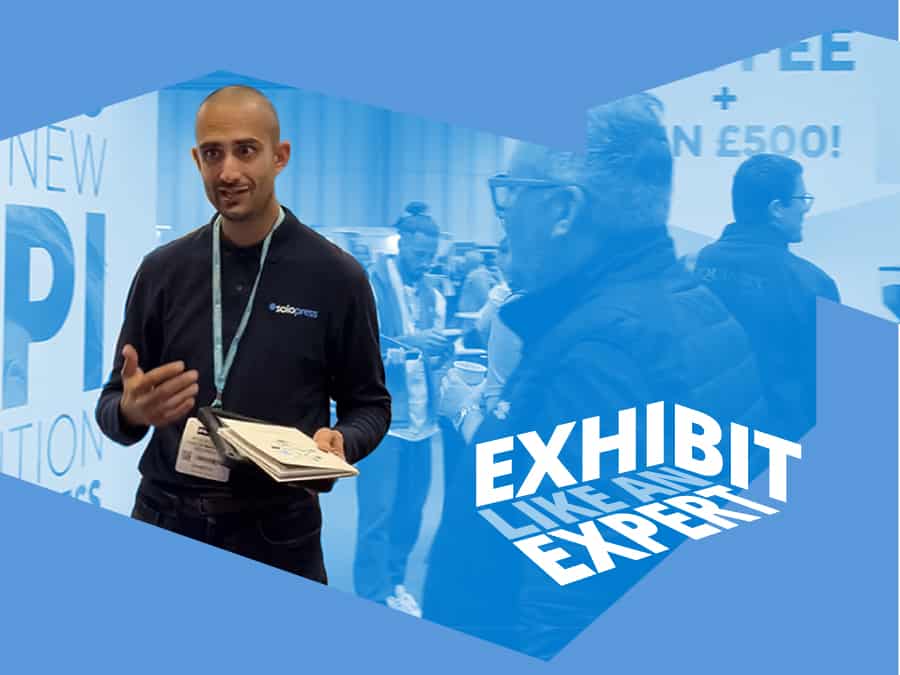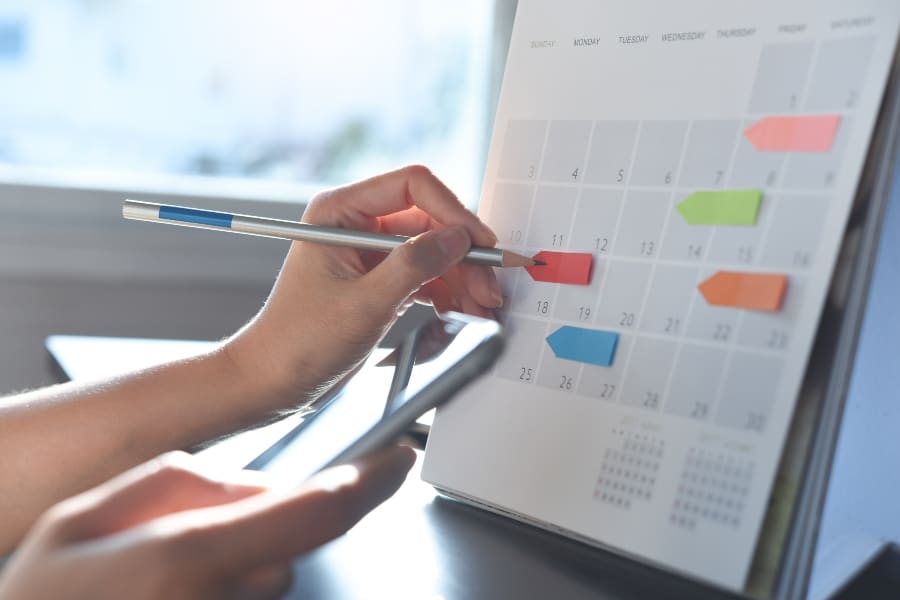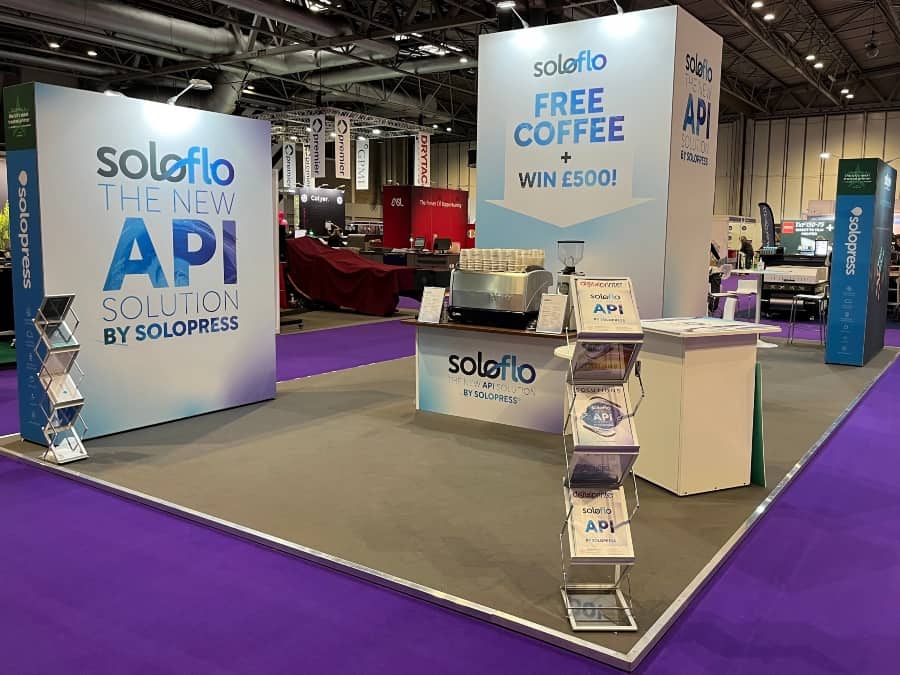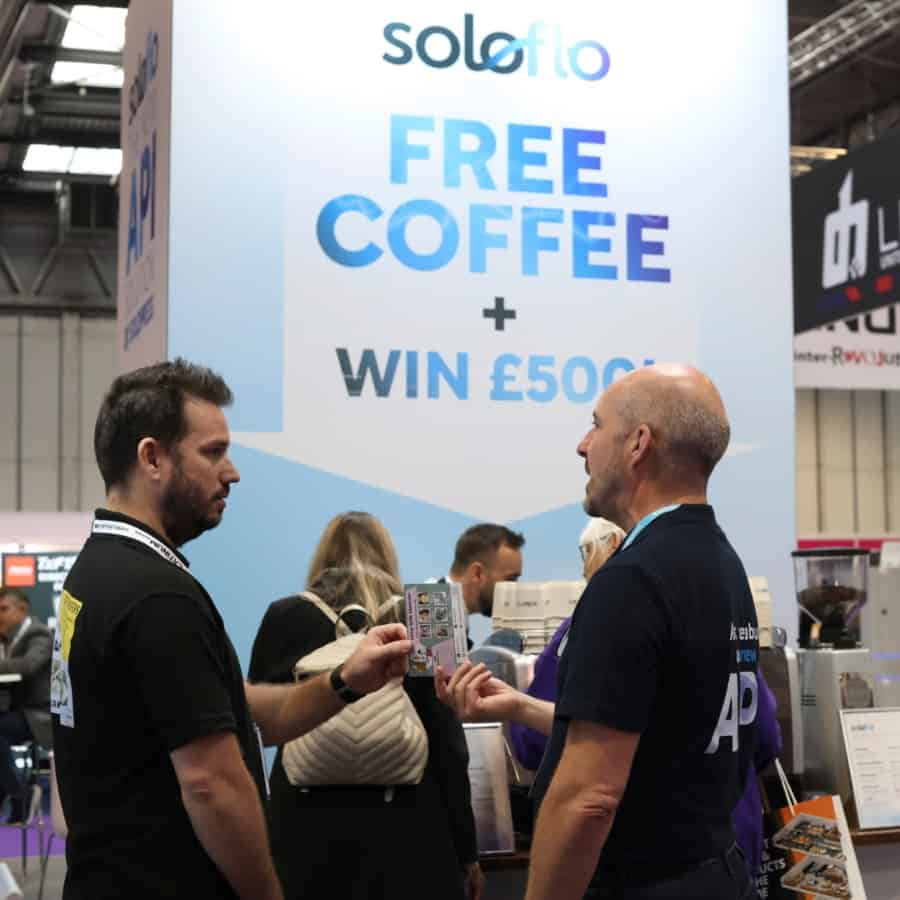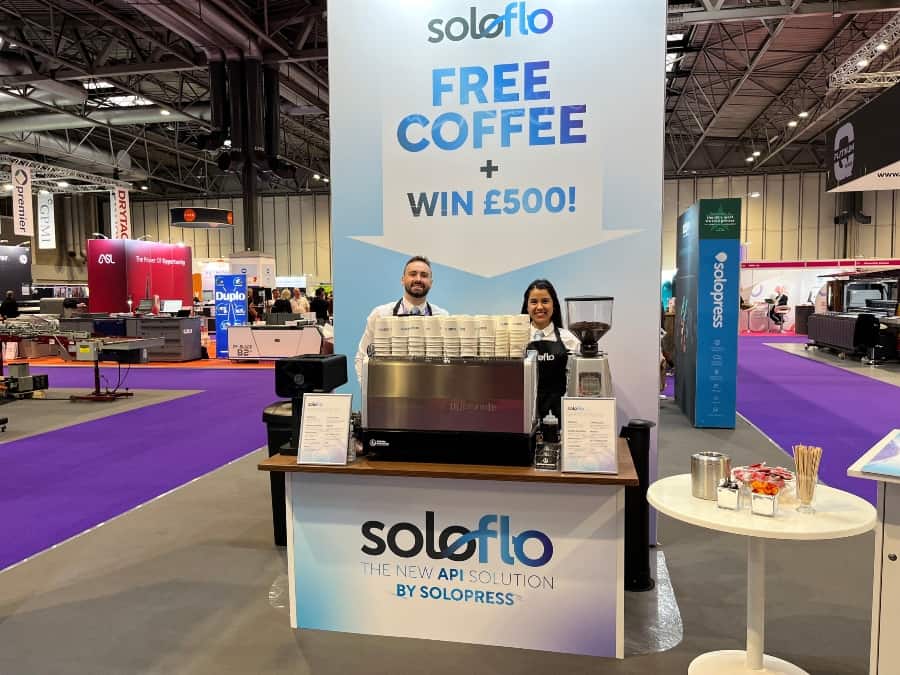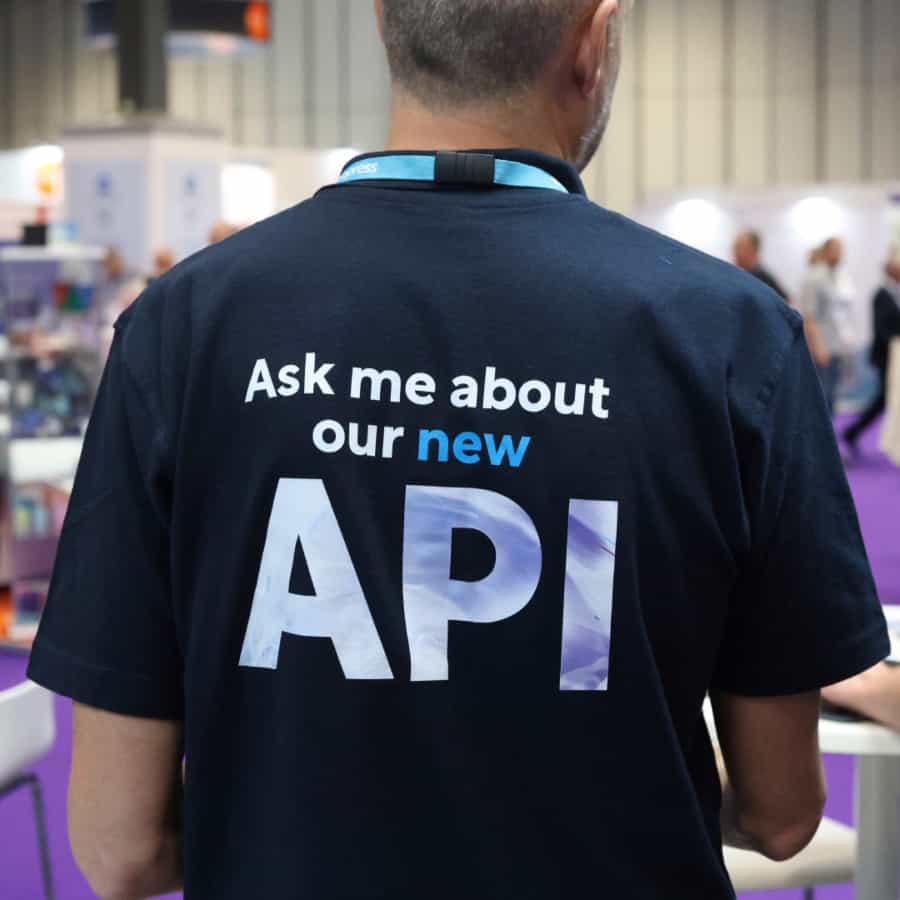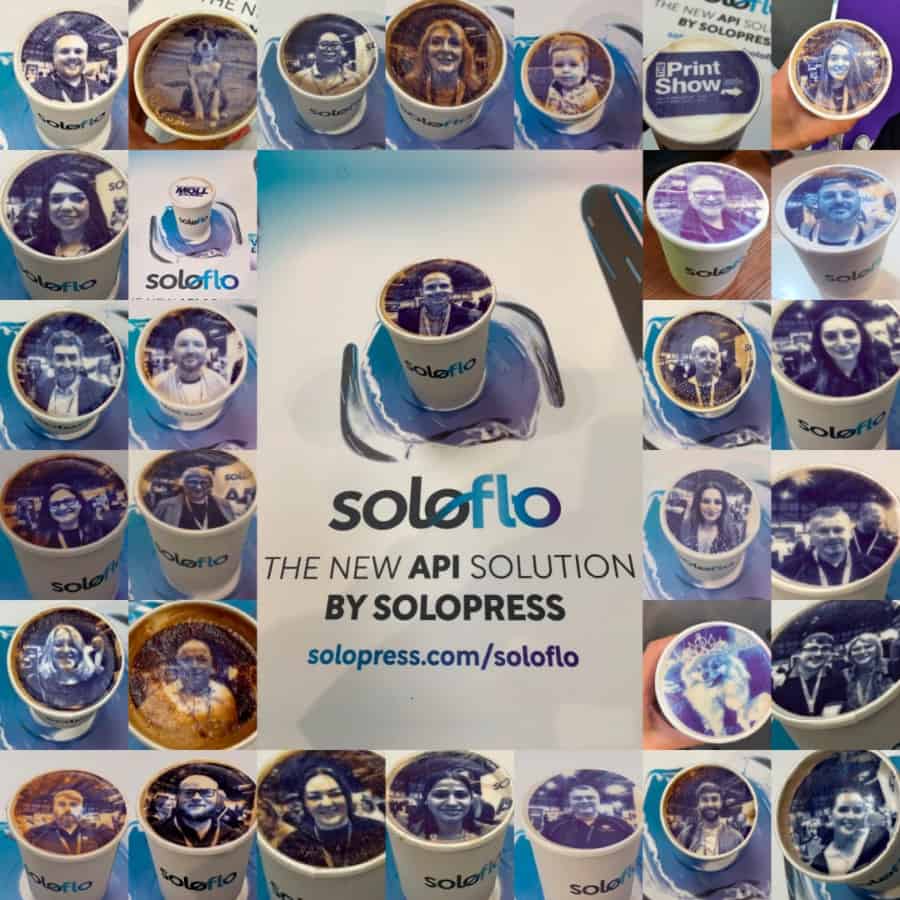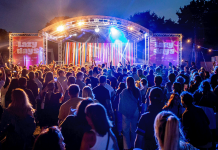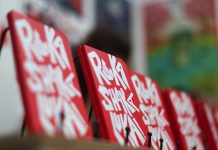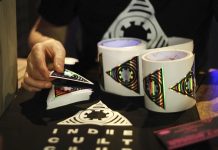Over the last year, we’ve tracked down and spoken to experts from different areas of the exhibition sphere. When The Print Show 2023 came around, it was time for us to put what we’d learned into action. We combined previous years’ experiences with top tips from industry experts and implemented them for ourselves.
Solopress’ Head of Marketing, Glen Eckett, oversaw our exhibition stand and strategy at this year’s show. After an amazing three days filled with coffee and conversations with customer new and existing, we put Glen on the spot to pinpoint what made our time at The Print Show 2023 so successful.
What was the exhibition planning process like and how long in advance did you start?
The The Print Show 2022 was the first stand I had been responsible for organising. As the 2021 show hadn’t taken place, I had over a year to plan our stand. With that experience under my belt, this year’s took less time and I started planning it in January. It’s a little excessive, but I like to feel organised. My personal way of dealing with the show is to make sure I always feel in control!
What concerns did you have in mind when approaching your exhibition stand design for The Print Show 2023?
Last year’s stand was such a success, we decided to use the same agency to support us again.
My main question was, how to freshen up our exhibition stand? I needed to figure out what we wanted to pitch and what our hook was going to be. Last year we offered a competition prize of £5,000 print, which was designed to appeal to target customers and not appeal to other attendees..
This year we decided to bring in some baristas to offer free coffee. The fun twist was that the coffee froth could be printed with imagery supplied from attendees’ phones or from taking their photo.
I then got our graphic designers involved in designing our exhibition stand and coffee counter so that these two suppliers would create a consistent look, which they achieved expertly.
What were your aims and ambitions for The Print Show 2023?
Last year, I had no idea what reaction we would get. In the past, we’ve not been known as a trade printer. However, at The Print Show 2022, it was clear to me that we belonged there and had become a trusted trade partner due to the changes that the business has undertaken to make it better serve these customers.
We were a potential supplier to many businesses that attended last year’s show, but the message we were hearing again and again from them was that Solopress needed a print API to facilitate integration. Based on this feedback, we have spent the past 12 months working on Soloflo, our new API which we launched at the show and in the trade press leading up to it.
View this post on Instagram
We wanted to combine our efforts at The Print Show with the work we put into our trade press campaigns this year. My aim was for anyone who uses a print API to be aware of our service. Making sure that there are very few within that niche who don’t know that Solopress have joined the party.
In fact, by arriving late, we’ve been able to put together a solution that overcomes the shortcomings of similar APIs already on the market. These were the right customers in the right environment.
What prior experience from the last exhibition were you able to use going into this year?
Last year’s Print Show was the first exhibition where I’d taken sole responsibility for the planning, so that brought along many new anxieties for me to overcome. However, this year was more relaxed as there were fewer unknowns.
Many of the logistics involved were the same, so the process was easy to remember. This year, I was able to reduce the number of variables at play.
As mentioned, our hook last year was our competition to win £5,000 worth of print. This year, we were very focused on Soloflo. We encouraged people to come to our stand with our free coffees, with a competition prize worth £500 for customers sharing a picture of their printed coffee on LinkedIn. The aim was for the people who entered the competition to spread the word about Soloflo to their network, expanding the reach beyond the people who attended the show.
Something that caught me out last year was that on the day of setting up your exhibition stand, everyone needed to wear a hi-vis jacket which I didn’t have! I saw plenty of people making that same mistake again this year as I was waiting to go into the hall, so this is definitely something that doesn’t seem to be as well-known as it should be.
Last year, we had huge Flags stationed at our stand promoting our competition. Design-wise, these were perfect. However, I quickly realised there was no easy way to fill up the bases with water, so I had to make dozens of journeys back and forth with a small water bottle which was far from ideal!
What have you learned from working with third parties such as Human Built and Aroma Baristas for an exhibition?
When working with third parties for something like an exhibition, communication is key. You have to remember that these companies work on shows like these all the time, all year round, multiple times a week.
It’s important to communicate exactly what you need from them and reassure yourself that they’ve everything in hand. My tip would be to always ask questions. Don’t leave yourself in any doubt, their vast experience means they’ll nearly always know the answer.
Our exhibition stand was built by an agency, Human Built, and we had another company, Aroma Baristas, serving coffee. We needed to arrange electricity and a network cable for the coffee machine which I had no idea how to do, but thankfully Human Built were able to arrange this for us. By communicating with both companies in a clear and timely manner, this meant that I could leave this potential banana skin to the professionals which put my mind at rest.
How did the event go on the day and what, if anything, would you have done differently?
The show was a big success for us, and the coffee proved to be extremely popular.
We had designed our stand to feature huge lettering advertising our free coffee and £500 competition behind our baristas. Despite this, however, we noticed that people weren’t encouraged to engage with our stand at first.
In response, we decided to change our tactics and adopt a more proactive approach. We started going out and asking people if they wanted a free coffee, and this seemed to break down a barrier. I think there’s a polite element of Britishness in us all that means many people wait to be asked!
We wore branded T-shirts with the phrase ‘Ask me about our new API’ printed on the back, and I think this made us a lot more visible when walking around the show.
Once again, I brought way too much marketing collateral. I tend to have the attitude that I’d rather have too much than not enough, but that never seems like a good idea at the end of the show when you have to pack everything away! I’d like to say that I’ll learn this lesson at future shows, but I probably won’t!
What was the team dynamic like and how important is it to consider personalities to assemble the right team?
Of the eight people we brought to the show, four of them were representing Solopress at a trade show for the first time. The mix of experienced team members and first-timers actually worked well, creating a blend of fresh and familiar faces.
You can’t be passive at these shows, you need to be constantly out talking and engaging with people – as we learnt from the free coffee signage. It’s best to bring colleagues that are comfortable with this approach, and who also have a thorough knowledge of the subjects you’ll be discussing.
We made sure that everyone we took this year had a good understanding of the services that we were going to be talking about, such as Soloflo.
This meant taking a well-balanced team, which included representatives from sales, software development, marketing, and even our Managing Director. With such a strong team at our stand, we knew there was no conversation that we couldn’t handle.
It can be a long three days so it’s important to keep the whole team motivated. One of the ways we did this was by going out for an evening meal as a team. You build up a real sense of camaraderie going to an event like this, as you’re all having a shared experience.
What would you put this year’s success down to?
It all goes back to having something interesting to talk about. We had a clear goal this year to get the word out about Soloflo, which gave us focus and made decision-making easier.
I saw Aroma Baristas at another event I attended earlier this year. They really impressed me, so I took their Business Card and emailed them the same day. After speaking with them, I found out that they can also provide printed coffees, which solidified the idea of them being at The Print Show with us.
Experience is so important. I feel confident in saying that if it wasn’t for our learnings from last year’s show, then this time wouldn’t have been so successful.
What did you learn last year that you were able to apply to this year’s show?
The key thing we learned from the last show was the need to create our own API, which set us on the road to building one and then promoting it at the show this year.
We also focused on promoting our presence at the show across more platforms. We pushed more interaction on social media this time, particularly through our competition on LinkedIn. Bringing our photographer and videographer up to the show to capture the show with stills and videos, ensured that we had the professional quality content we needed.
By the second day, our social media strategy was working. People had heard about our printed coffees and were coming to our stand to get one and stay for a chat about print and of course, Soloflo.
How are you going to implement learnings from this year’s show, and how?
For next year I’d love to take a similar mixture of team members from across the company. It’s important to be promoting something that people actually want, such as our API this year.
I’m convinced that our printed coffees this year created a bigger lasting impression than our goodie bags did the previous show.
However, I know we can’t show up next year with the same stand selling coffee as it won’t have the same effect. Providing attendees with something engaging and desirable again will be a huge focus of mine.
What was the best piece of advice you received in the build-up to this exhibition and where did it come from?
Something that really helped in the preparations for this year’s show was attending the Your Business Expo event in Milton Keynes back in June. There, we spoke to lots of exhibitors and attendees about what makes a successful exhibition stand.
All of the insights we gathered from the interviews we recorded were useful, but the question that I found particularly helpful was “how should exhibitors follow up with interested attendees after the show, and how soon afterwards?”
Steve Lloyd of Exhibition Mastery spoke about “the law of diminishing astonishment”, referring to the fact that people are less interested in what you have to talk about the longer you leave it after your initial meeting. This particularly resonated with me and reinforced my belief that all our hard work would have been for nothing if we didn’t follow up on our leads swiftly after the show, which we have done.
If I was to give myself advice, it would be to be as organised as possible. I can find an event of this magnitude stressful, particularly as my background is in digital marketing and not in brand marketing. However, forcing myself to be highly organised made the whole event easier to deal with.
Need help with your exhibition stand?
Do you need more than Glen’s words of wisdom to guide you through your upcoming exhibition? Take a look at our exhibition and conference printing range to find the missing piece of your puzzle to make your event a success.

